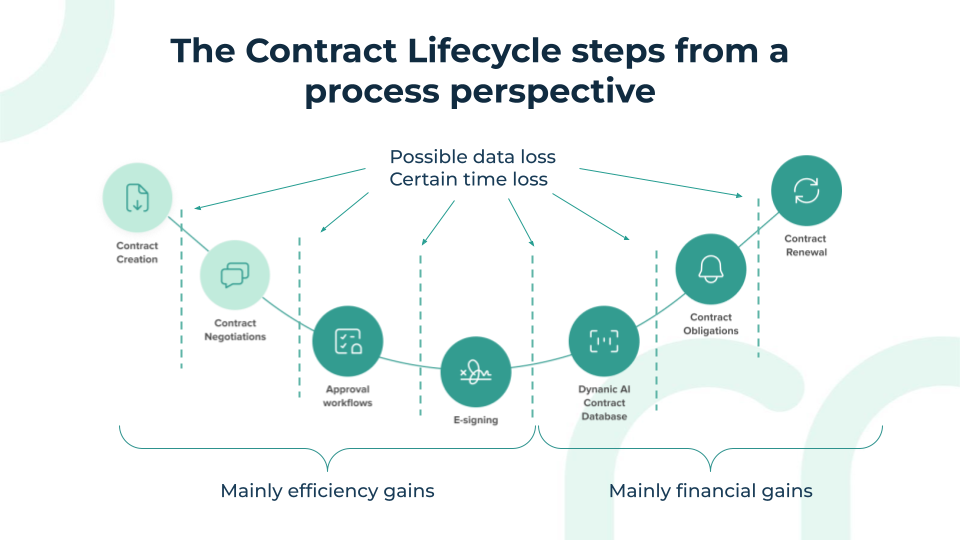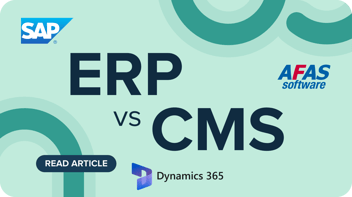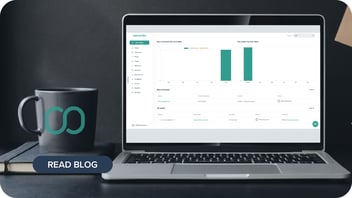Starter guide for efficient contract management
In today's rapidly changing business world, efficient contract management is a crucial factor that allows organisations to streamline their operations, mitigate risks and maximise profits. Whether you are an SME or a large multinational, understanding the importance of contract management and knowing how to navigate through the process can make a significant difference in achieving success.
In this article, you will learn the basics of contract management. From defining contract management benefits to highlighting key steps and best practices, we provide you with the knowledge and tools to get started or optimise your contractual processes.
Want to know your progress toward an optimal contract process? Immediately take the test below 👇
Why is contract management important for your business?
Contracts form the foundation of any business arrangement, defining the relationships between parties, specifying deliverables and ensuring compliance with the law. Managing contracts effectively is vital for several reasons:
- Mitigate risks: Good contract management reduces the risk of disputes, breaches or legal complications. You can proactively address potential dangers and protect your organisation's interests by clearly outlining expectations, terms and conditions.
- More efficiency: With contract management, you streamline your contract processes, minimising the risk of delays, making workflows smoother and preventing administrative bottlenecks. With organised processes, you can optimise the use of resources, increase productivity and achieve better results. A key example of this is e-signing, which allows projects to be started quickly if the signing process is facilitated and digitised.
- Maximising value: Contracts can involve significant financial investments or potential revenues. By managing them efficiently, you can ensure that contractual obligations are respected, negotiate favourable terms and take advantage of potential (market) benefits, ultimately maximising the value of your agreements.
Contract management challenges
Every company benefits from contract management but it comes with some challenges. Let us illustrate this with some figures:
- On average, 75% of contracts come from outside the organisation. On the one hand, this makes it challenging to keep an overview, while on the other hand you want to be sure that you are always protected as an organisation. The latter is only possible if you can be sure that every contract has been adequately reviewed and approved internally.
- Contracts often get scattered throughout the organisation. Somewhat logical, as ideally each department is responsible for the contracts they enter into. Yet 25% of contracts are untraceable when you need them. In practice, this number is often quite a bit higher. That is why it is important to store all contracts and associated documents centrally, so that they do not get lost and can be found quickly.
- 65% of all contracts lack information. For example, there is no clarity on the start date, the notice period is not clear because it is in the general conditions but cannot be found, the other party has not signed the contract...
Gelukkig kunnen deze uitdagingen aangegaan worden en uit de weggeruimd worden door een geoptimaliseerd en gestroomlijnd contractmanagementproces. Een eerst stap hierin is het in kaart brengen van je huidige proces en gaan kijken waar er kan geoptimaliseerd worden.
Step by step to optimal contract Management
In the initial stages from contract creation to contract signing, we see that you can mainly gain from making your contract process more efficient. So here the focus is on saving time on the one hand, and being able to go through processes faster on the other. Think of starting up projects faster and sending out your invoices on time because your contract is signed faster.

Once the contract is signed, we see that in the follow-up to the contract, it is mainly financial gains that can be realised. After all, the value of a contract is often not (fully) realised or, even worse, a contract is not terminated in time and creates unnecessary costs and risks.
Some examples:
- If your leases are tracked in Excel and this is not sufficiently monitored, forgetting to terminate them in time, you could suddenly find yourself stuck with a property you don't need for 3 extra years.
- Another situation where things often go wrong is when someone leaves the company. This person has conducted the negotiations, but there is no trace of the negotiation process and agreements made anywhere. As a result, you are not fully aware of what you are entitled to and, at the same time, your negotiating position towards the other party is undermined.
Preparation is key
Before you start the practice, it is important to have clear objectives in mind for your contract management process. Start by identifying your organisation's specific goals and requirements. Consider factors such as risk mitigation, compliance, scalability and cost-effectiveness. By clearly defining your objectives, you can tailor your contract management strategy accordingly.
Also, be sure to have an inventory of all your contracts and associated documents beforehand. Companies often underestimate how many contracts are in circulation within the company. You can use this checklist to collect all contracts and not overlook any.
Steps to a better contract process
- Exploring the current situation
Where are your contracts currently located?
Who is responsible for which contracts and for which contract actions?
Which processes already exist and which are still missing?
Which goals do you definitely want to achieve? - Identify pain points and quick wins
Which contracts contain the most value?
What are the biggest pain points in the current approach?
What parameters do you want to extract from a contract? - Defining the scope
Analyse the different contract types & contracting parties
Identify involved parties and their needs (departments, branches,...)
Set contract objectives: what impact do you want to achieve in the short and long term?
What's the budget?
Technology & contract management
Once you have clear objectives and the preparation work is done, it is time to start looking for the right tool(s) to facilitate your optimal contract process. With specialised contract management software, you can automate and streamline different aspects of the process. These tools have functions to optimise one or more parts of the contract lifecycle.
Curious about what this project would look like for you?
Ready to start contract management in no-time?
Schedule a meeting with our experts: they will help you develop a personal contract management strategy.
100% tailored to your organization!






